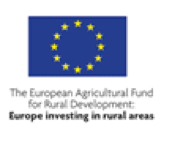Venue Renovation
Existing farm buildings transformed into a stunning events space
Existing farm buildings transformed into a stunning events space
At the end of 2017 we completed an express of interest application for additional LEADER funding to help convert 2 of the farm buildings into an events venue to allow us to hire the space out as a blank canvas to allow people to hold events such as weddings, parties and family gatherings. We were then invited to submit a full application for our project which was submitted in May 2018. Our grant application was approved in June 2018 which allowed us to progress with the project.
The planning application was submitted in July 2018 and we were granted full planning permission in December 2018. The building warrant process took longer than expected and it was May 2019 before our building warrant application was approved. We were able to do prep work between January and May, but the bulk of the renovation work was completed between June and September with our official opening taking place on 6th October 2019.
The tradesmen we had onsite were all fantastic, they knew the tight timescale we had to complete the project as we had not long started the work in June when our first Bride Erin, came along and fell in love with the venue and booked her wedding for 12th October 2019! Erin loved the feel of the place and could see where we were headed with the project and she certainly made us all focus and push to the deadline of completing by the end of September.
Courtyard
The Courtyard forms part of the old traditional part of the farm steading. We have used a section of the Courtyard buildings to form part of the venue. We have called this section The Byre which is a L shaped layout. The other part of the Courtyard buildings are used for storage and we have planning permission to convert one section into accommodation as a future project. The Courtyard is a stunning space surrounded by the old sandstone buildings. We removed an old lean to section made of corrugated tin which was positioned in one of the corners, the structure was not safe and it was no longer needed. The main work that took place in the Courtyard was the groundworks. It was a difficult decision as to what to lay on the ground to keep the traditional look and also make it an affordable option. After looking at many different options we chose Tobermore Tegula monoblock and are happy with the look we have achieved.
Byre
The Byre has had various uses over the years from grain storage, to housing livestock to general storage. We weren’t making full use of this part of the steading as it was not easy to access it with the size of modern machinery. We had installed our biomass system in part of this section in 2015, so part of this project involved moving the biomass plant to another shed on the farm. The roof needed replacing as you could see daylight through the old pan tiles and many of the timber trusses were rotten and the roof had already been patched up over the years in many areas. We wanted to keep the traditional look of the roof with exposed trusses so our joiners handmade the roof to achieve the look we wanted. We were able put the roof insulation on the outside of the roof between the sarking and new roof tiles which allowed us to leave the trusses exposed in the inside. To use clay tiles on the roof was going to be too expensive so we opted for an alternative concrete tile with a distressed colour of farmhouse red to give it that old look and we think it looks great and ties in well with the old steading. It’s difficult making these decisions as it costs so much money and has a huge impact on how the property looks so it’s a relief when you think you have made the right decision after the work is done! 2 sleepless nights were had during the whole project, one in relation to choosing the right roof tiles and the other the monoblock for the courtyard!
The internal work in the Byre involved removing a tunnel that was attached to one of the walls which formed part of an old grain drying system. When that was removed the sandstone walls in the section that were then exposed required to much work to restore them so we decided to timber clad some of the walls in the Byre to cover those areas. All the internal walls were covered in white paint so we sandblasted them to bring them back to the original sandstone and they look amazing. New sash and case windows and doors were installed, all handmade and painted. There are lots of windows in the Byre and we chose to have glass panels at the top of the doors too, allowing as much natural light in as possible. We specifically did not want doors that were fully glazed as we wanted the Bride at weddings to be able to enter the building without being seen.
To heat the Byre we decided to install underfloor heating which is connected to our biomass system. The original floor in the Byre was concrete but was not an even surface so we laid a new subfloor on top of it before laying the underfloor heating pipes. We then laid a liquid screed on top of the heating pipes which is the finished floor in the Byre. We did not polish the concrete as we did not want a smooth slippery surface, instead we applied a sealant which makes the surface easy to clean. Old timber lintels above some of the windows had to be replaced and the ones above the doors replaced and raised to achieve the correct height.
There was already a balcony area in the Byre which was a platform to reach the main electrics board. We have made a cupboard underneath the balcony and created a feature with church like doors to access the cupboard and the area in front of the doors has become the main ceremony area for weddings. The balcony above provides a great vantage point for photographers or videographers to capture the wedding ceremony and all the guests face on.
Barn
The Barn was a general purpose shed used to store machinery and grain at harvest time. We decided to use this shed as part of the venue as it attaches onto the end of the Byre and allows the events to flow by making use of the different spaces. The main structure did not need to be altered in anyway and we have retained many of the original features within the barn. There are old timber panels down one side of the Barn that we managed to clean up and coat with a fire-retardant solution. The other side of the Barn is constructed with old red brick which brings that rustic feel to the space. We have made the Barn wind and watertight and spray insulated the roof to contain the heat which is generated by 2 large space heaters that sit on the outside of the Barn when functions are on. The old cattle troughs remain in place and make a great back drop to the main bar area we have created in one section. In the top corner within the Barn we have built a kitchen/prep room which can be used by caterers while they are on site. We positioned it in the top corner of the Barn as it allows caterers to access both the Byre and Barn easily from that location. The timber cladding on the external walls of kitchen keeps that rustic feel within the Barn.
Emergency lighting, emergency exits and a fire alarm system have been fitted throughout and both the Byre and Barn are fully accessible. The main electrical board was fully upgraded and everything rewired throughout to a 3 phase supply.
Toilets
We made the decision not to build permanent toilets until we were established. This allows us time to see what type of events we attract and the average number of people attending the events, which will in turn enable us to build the correct number of toilets required. At present we hire in luxury loos as and when we hold events which also includes a fully accessible toilet with baby changing facilities.
Car Park
We wanted to retain the grass field that we use as a car park and invested in a grass matting system called GP Flex 1800. It is a new generation grass protector mesh that protects grassed areas from pedestrian and vehicle damage whilst offering elements of slip resistance and flexibility. The field was rolled, the matting laid then pinned in place. The grass is easily mowed without damaging the matting. The car park can hold 54 cars and we have additional car park spaces in the farmyard which is also suitable for coaches with no restricted access. We have created a disabled parking bay with a number of accessible spaces. A passing place was constructed in the farm road as stipulated in our planning permission, to help with the flow of traffic and prevent cars queuing on the main trunk road.
The Den at Culross
Blairhall Mains Farm
Culross, Dunfermline, KY12 8EP
Phone: 07769 240958
Email: info@theden-atculross.co.uk




© All rights reserved The Den Of Culross